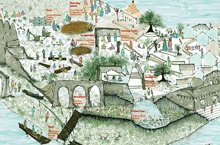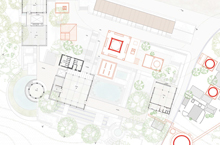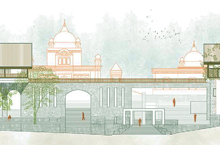
RIVER AND THE COMMUNITY
Community Centre at Mandla, Madhya Pradesh
Category: Community Facility

The dependency of a settlement on a river is quite intricate and complex. Communities have evolved, survived over the years and settlements have rooted themselves along the river banks. Forts, temple complexes, pilgrim sites, spaces of worship, ghats and palaces form an integral part of the riverscapes. River becomes a central space for congregation, celebration, demonstration, subsistence, recreation and relaxation. The study attempts to look into the relationship of the river and the community, through the case of Mandla, looped by river Narmada on three sides, in Madhya Pradesh.
The Team

ARCHITECT
SNEHA KHULGE
Ranjit Sinh Associates, Mumbai
The Challenge

There is a need for creating an alternative to riverfront upliftment, which is not driven by the models proposed across the country, but the one that would enable the community, to celebrate its waters, a space that extends from the realm of the community space to the realm of the public, a model that would help generate economy as well as create spaces of recreation for the communities to bank on its river.
The Solution

The design intervention is sited between the community and its urban farm, weaving the various public spaces together. The thick stone walls, at the ground level conform with the language of fort ruins. The plazas, landscapes and walkways cut across them creating accessibility to the riverfront. The upper levels house form the community spaces. Terraces, stairways and steps connect these pavilions to each other and to the ground level, forming a labyrinth of public spaces in between. A rainwater harvesting system becomes an integral part of the design
Expected Impact

A community centric riverfront public realm, creating opportunities for the upliftment, which is informed by the needs of the community, is imagined for Mandla, as an alternative to blindly commercialising the entire riverine edge.
